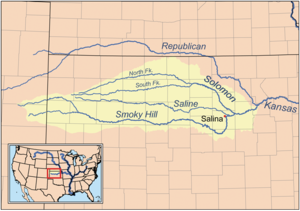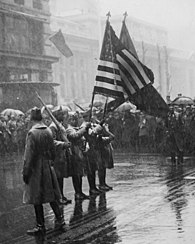
The Cheyenne are an Indigenous people of the Great Plains. Their Cheyenne language belongs to the Algonquian language family. Today, the Cheyenne people are split into two federally recognized nations: the Southern Cheyenne, who are enrolled in the Cheyenne and Arapaho Tribes in Oklahoma, and the Northern Cheyenne, who are enrolled in the Northern Cheyenne Tribe of the Northern Cheyenne Indian Reservation in Montana.

The Sand Creek massacre was a massacre of Cheyenne and Arapaho people by the U.S. Army in the American Indian Wars that occurred on November 29, 1864, when a 675-man force of the Third Colorado Cavalry under the command of U.S. Volunteers Colonel John Chivington attacked and destroyed a village of Cheyenne and Arapaho people in southeastern Colorado Territory, killing and mutilating an estimated 69 to over 600 Native American people. Chivington claimed 500 to 600 warriors were killed. However, most sources estimate around 150 people were killed, about two-thirds of whom were women and children. The location has been designated the Sand Creek Massacre National Historic Site and is administered by the National Park Service. The massacre is considered part of a series of events known as the Colorado Wars.

Black Kettle was a prominent leader of the Southern Cheyenne during the American Indian Wars. Born to the Northern Só'taeo'o / Só'taétaneo'o band of the Northern Cheyenne in the Black Hills of present-day South Dakota, he later married into the Wotápio / Wutapai band of the Southern Cheyenne.
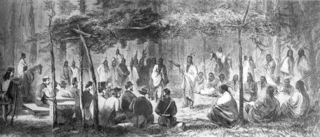
The Medicine Lodge Treaty is the overall name for three treaties signed near Medicine Lodge, Kansas, between the Federal government of the United States and southern Plains Indian tribes in October 1867, intended to bring peace to the area by relocating the Native Americans to reservations in Indian Territory and away from European-American settlement. The treaty was negotiated after investigation by the Indian Peace Commission, which in its final report in 1868 concluded that the wars had been preventable. They determined that the United States government and its representatives, including the United States Congress, had contributed to the warfare on the Great Plains by failing to fulfill their legal obligations and to treat the Native Americans with honesty.

The Dog Soldiers or Dog Men are historically one of six Cheyenne military societies. Beginning in the late 1830s, this society evolved into a separate, militaristic band that played a dominant role in Cheyenne resistance to the westward expansion of the United States in the area of present-day Kansas, Nebraska, Colorado, and Wyoming, where the Cheyenne had settled in the early nineteenth century.

The Battle of the Washita River occurred on November 27, 1868, when Lt. Col. George Armstrong Custer's 7th U.S. Cavalry attacked Black Kettle's Southern Cheyenne camp on the Washita River.

The Red River War was a military campaign launched by the United States Army in 1874 to displace the Comanche, Kiowa, Southern Cheyenne, and Arapaho tribes from the Southern Plains, and forcibly relocate the tribes to reservations in Indian Territory. The war had several army columns crisscross the Texas Panhandle in an effort to locate, harass, and capture nomadic Native American bands. Most of the engagements were small skirmishes with few casualties on either side. The war wound down over the last few months of 1874, as fewer and fewer Indian bands had the strength and supplies to remain in the field. Though the last significantly sized group did not surrender until mid-1875, the war marked the end of free-roaming Indian populations on the southern Great Plains.

An infantry square, also known as a hollow square, was a historic close order formation used in combat by infantry units, usually when threatened with cavalry attack. To deploy its weapons effectively, a traditional infantry unit would generally form a line; but the line was vulnerable to more nimble cavalry, which could sweep around the end of the line, or burst through it, and then attack the undefended rear or simply sweep along the line attacking the individual footsoldiers successively. By arranging the unit so that there was no undefended rear or flank, an infantry commander could organise an effective defense against cavalry attack. With the development of modern firearms and the demise of cavalry, the square formation is now considered obsolete.

The Battle of Beecher Island, also known as the Battle of Arikaree Fork, was an armed conflict between elements of the United States Army and several of the Plains Native American tribes in September 1868. Beecher Island, on the Arikaree River, then known as part of the North Fork of the Republican River, near present-day Wray, Colorado, was named afterwards for Lieutenant Fredrick H. Beecher, an army officer killed during the battle.
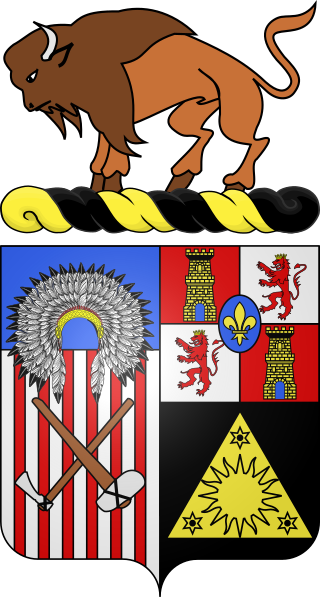
The 10th Cavalry Regiment is a unit of the United States Army. Formed as a segregated African-American unit, the 10th Cavalry was one of the original "Buffalo Soldier" regiments in the post–Civil War Regular Army. It served in combat during the Indian Wars in the western United States, the Spanish–American War in Cuba, Philippine–American War and Mexican Revolution. The regiment was trained as a combat unit but later relegated to non-combat duty and served in that capacity in World War II until its deactivation in 1944.

Fort Hays, originally named Fort Fletcher, was a United States Army fort near Hays, Kansas. Active from 1865 to 1889 it was an important frontier post during the American Indian Wars of the late 19th century. Reopened as a historical park in 1929, it is now operated by the Kansas Historical Society as the Fort Hays State Historic Site.

The Saline River is a 397-mile-long (639 km) tributary of the Smoky Hill River in the central Great Plains of North America. The entire length of the river lies in the U.S. state of Kansas in the northwest part of the state. Its name comes from the French translation of its Native name Ne Miskua, referring to its salty content.
Mo-nah-se-tah or Mo-nah-see-tah, aka Me-o-tzi, was the daughter of the Cheyenne chief Little Rock. Her father was killed on November 28, 1868, in the Battle of Washita River when the camp of Chief Black Kettle, of which Little Rock was a member, was attacked by the 7th U.S. Cavalry under the command of Lieutenant Colonel George Armstrong Custer. Mo-nah-se-tah was among the 53 Cheyenne women and children taken captive by the 7th Cavalry after the battle.
Little Rock was a council chief of the Wutapiu band of Southern Cheyennes. He was the only council chief who remained with Black Kettle following the Sand Creek massacre of 1864.
Medicine Arrows (c.1795—1876) was a Cheyenne chief and Keeper of the Medicine Arrows from 1850 until his death. Rock Forehead became known to whites as Medicine Arrows after his appointment to this office. Among the Cheyenne he was also known by the nickname "Walks with His Toes Turned Out."

Edmund Gasseau Choteau Le Guerrier, of American and Cheyenne parentage, was a survivor of the Sand Creek massacre in 1864. He was an interpreter for the U.S. government during the Indian Wars between the Cheyenne and the United States, and later became a successful rancher.

Cheyenne and Arapaho Indian Reservation were the lands granted the Southern Cheyenne and the Southern Arapaho by the United States under the Medicine Lodge Treaty signed in 1867. The tribes never lived on the land described in the treaty and did not want to.

The Northern Cheyenne Exodus, also known as Dull Knife's Raid, the Cheyenne War, or the Cheyenne Campaign, was the attempt of the Northern Cheyenne to return to the north, after being placed on the Southern Cheyenne reservation in the Indian Territory, and the United States Army operations to stop them. The period lasted from 1878 to 1879.
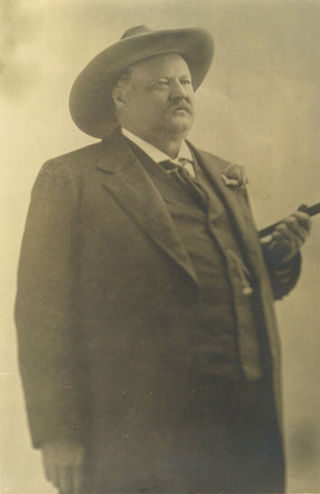
Simpson Everett Stilwell was a United States Army Scout, Deputy U.S. Marshal, police judge, and U.S. Commissioner in Oklahoma during the American Old West. He served in Major George A. Forsyth's company of scouts when it was besieged during the Battle of Beecher Island by Indian Cheyenne Chief Roman Nose and was instrumental in bringing relief to the unit.

The Battle of Punished Woman's Fork, also called Battle Canyon, was the last battle between Native Americans (Indians) and the United States Army in the state of Kansas. In the Northern Cheyenne Exodus, 353 Cheyenne, including women and children, fled their reservation in Oklahoma in an attempt to return to their homeland on the northern Great Plains. In Kansas, they fought soldiers of the U.S. Army at Punished Woman's Fork, killing the army commander. After the battle the Cheyenne continued northward. Some were successful in reaching their relatives in Montana. Others were captured or killed near Camp Robinson, Nebraska.

